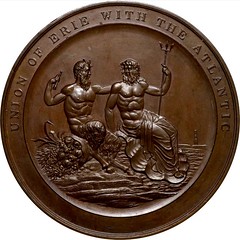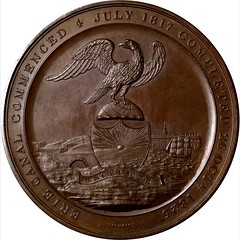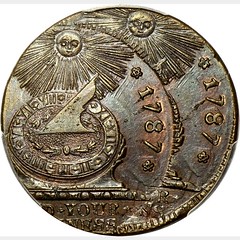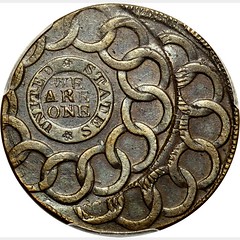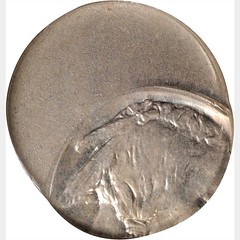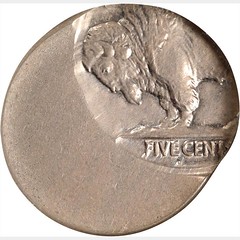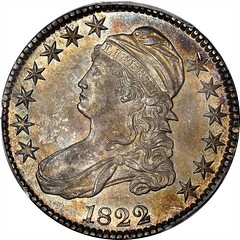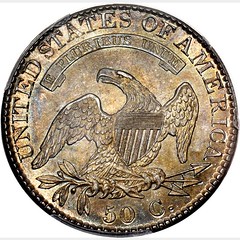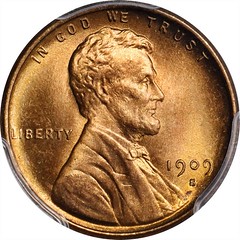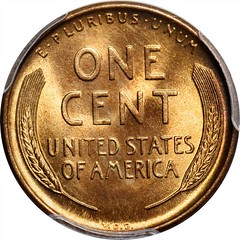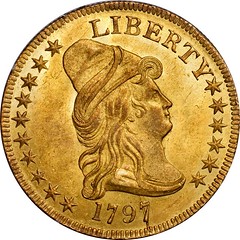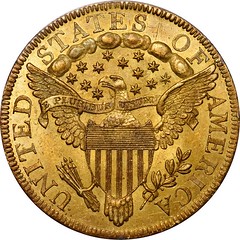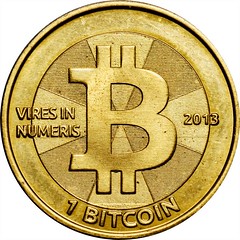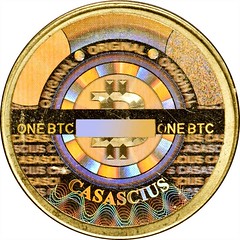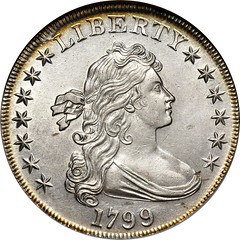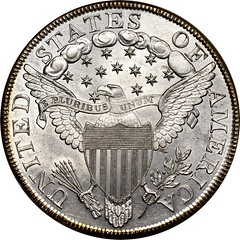
PREV ARTICLE
NEXT ARTICLE
FULL ISSUE
PREV FULL ISSUE
V25 2022 INDEX E-SYLUM ARCHIVE STACK'S BOWERS SPRING 2022 AUCTION SELECTIONSHere are some items that caught my eye in the Spring 2022 Stack's Bowers sale catalogs. -Editor
Lot 1118: 1825 Erie Canal Completion Medal 1825 Erie Canal Completion Medal. By Edward Thomason of Birmingham, England. Copper. Choice Mint State. 81.5 mm. Obv: Forest god Pan seated with sea god Neptune within inner circle, outside of which along the upper border is the inscription UNION OF ERIE WITH THE ATLANTIC. Rev: New York State Arms within inner circle, legend around border gives dates of commencement and completion. The following year the motifs and inscriptions were copied by Charles Cushing Wright and used to produce an American made version in much smaller 44 mm size. That newer version is now aggressively collected by so-called dollar enthusiasts as HK-1. White metal impressions from Thomason's dies are often disturbed by heavy contact marks, rim bumps and tin pest; copper impressions such as this are far rarer in an absolute sense and, in fact, this is the first example in this composition that we can recall handling. An exceptionally appealing, problem free example with rich chocolate-brown patina to surfaces that are sharply struck with a lively satin finish. Provenance: Ex Zabriskie, lot 645. Collector envelope and tags with provenance notation included. Important medal with an impressive pedigree. Beautifully executed. -Editor
To read the complete lot description, see:
Lot 1254: Double Struck 1787 Fugio Cent 1787 Fugio Cent. Pointed Rays. Newman 11-B, W-6785. Rarity-4. UNITED STATES, 4 Cinquefoils--Double Struck--MS-63 BN (PCGS). Newman 11-B is one of the scarcer Bank of New York hoard varieties in the Fugio cent series, the 1948 census counting only 60 coins. The present example is plated on page 70 of Jeff Rock's 2016 update to Rob Retz's Fugio Copper Notes, where it is described as, "A spectacular multiple offset strike exhibiting an early reverse die state without any signs of obverse clash marks." This is not quite true, since even without the aid of a loupe one's eye will discern faint clash marks from the rings in the obverse field areas around both dates. The clashing is not heavy, however, and the die state is still earlier than Newman C. Exceedingly rare as a major error in the Fugio series, and easily among the most desirable Newman 11-Bs extant, this coin would serve as a highlight in the finest specialized collection. A spectacular double striking error. -Editor
To read the complete lot description, see:
Lot 1521: Off-Center Buffalo Nickel Undated San Francisco Mint Buffalo Nickel--Struck 45% Off Center--MS-63 (NGC). This interesting piece is struck off center to 5 o'clock, with the result that the date area is (far) off the planchet. The mintmark area on the reverse is present, however, and although it is a bit distended the S is identifiable. Lustrous where struck with pretty pinkish-silver iridescence throughout. Another great error coin; there are two off-center Buffalos in the sale. -Editor
To read the complete lot description, see:
Lot 2102: 1822 Capped Bust Half Dollar 1822 Capped Bust Half Dollar. O-106. Rarity-2. MS-65 (PCGS). CAC. A highlight of the Bust half dollars from the Abigail Collection, this is a glorious Gem that really needs to be seen to be fully appreciated. Both sides are originally and attractively toned with iridescent olive and pinkish-gold peripheral highlights to otherwise sandy-silver surfaces. Intensely lustrous and fully struck, a noteworthy absence of even trivial blemishes further enhances this coin's incredible appeal. The die state is the earliest known for the 1822 Overton-106 attribution, the obverse with six die lines (as made) at the border below star 13. Writing in the Autumn 2021 revision to his AMBPR for Bust half dollars, Stephen J. Herrman reports a single MS-66 as CC#1 for this attribution. The present example is tied for CC#2 with two MS-65s in that listing, one each for the O-106 and O-106a die states. A beautiful high-condition example of a classic U.S. coin. -Editor
To read the complete lot description, see:
Lot 3015: 1909-S VDB Lincoln Cent 1909-S Lincoln Cent. V.D.B. MS-67 RD (PCGS). A landmark example of this perennially popular, key date issue from the first year of the Lincoln cent series. Untroubled by even the most trivial blemishes, the surfaces approach the zenith of numismatic perfection. They are fully lustrous and frosty with outstanding mint color in vivid reddish-orange. Razor sharp in striking detail with extraordinary eye appeal. Among the most famous coins in American numismatics and one that even non-collectors have sought ever since its introduction, the 1909-S V.D.B. Lincoln cent has stood the test of time in terms of popularity. The centennial of Lincoln's birth in 1909 provided an opportunity for Theodore Roosevelt to continue with his "pet crime" to revitalize the nation's coin designs. Sculptor and medalist Victor David Brenner had designed some medals for Roosevelt in 1908 and also created a bronze plaque featuring the now familiar profile of Lincoln. Brenner suggested to Roosevelt that the cent would be an excellent choice to commemorate Lincoln, especially since Longacre's Indian design was half a century old by that time. Brenner modified the bust from his plaque for the obverse and placed a pair of durum wheat stalks on the reverse surrounding the denomination, a simple but very distinctive design. Brenner placed his initials at the very bottom on the reverse, a decision that would come to be controversial. With some modifications, by late May models were prepared for approval by newly inaugurated President William H. Taft with the final version approved by Secretary of the Treasury Franklin MacVeagh on July 14, for an August 2 release date. The Philadelphia Mint had a head start on production of the new coins, while San Francisco did not receive the dies until late June. Long lines formed for the new coins and they quickly proved to be a hit with the public. Almost immediately the initials on the reverse prompted questions and soon their seemingly prominent placement proved to be too much; within days new dies were prepared with the initials removed entirely. We generally avoid discussing prices and grades, but the condition of this piece is astounding - who wouldn't want one like this for their collection? -Editor
To read the complete lot description, see:
Lot 3151: 1797 Capped Bust Right Eagle 1797 Capped Bust Right Eagle. Heraldic Eagle. BD-2, Taraszka-8. Rarity-4+. AU-58 (PCGS). CAC. OGH--First Generation. Bass-Dannreuther 2 is the first of three die marriages that the Mint used to strike 1797 Capped Bust Right eagles of the newly introduced Heraldic Eagle reverse type. It is Style 1 of this type; the head punch is the familiar Draped Bust motif from Robert Scot's original hub of 1795, but the reverse is from a John Smith Gardner hub with a long thin neck to the eagle. This is the only die variety of this style. The remaining two marriages of the 1797 Heraldic Eagle display reverse eagle punches that, although they are also from Gardner hubs, are characterized by long thick neck (BD-4) and short thin neck (BD-3) eagles. The estimated mintage for this issue as a whole is in the range of 8,750 to 12,500 pieces. BD-2 vies with BD-4 as the most plentiful variety of the issue, although with no more than 100 coins believed extant (per John W. Dannreuther, 2006), the scarcity cannot be denied. Early eagles as a group are scarce and Mint State survivors are even more elusive, making this an important bidding opportunity worthy of serious consideration. This coin represents the typically encountered obverse die state of the 1797 BD-2 variety, identifiable by prominent die cracks through the second digit 7 in the date. The base of that digit is joined to the border by a single prominent crack, which has now developed into a small cud. There are two cracks within that digit, the left crack continuing only to the lower serif while the right crack, with die crumble evident, continues through the top of the 7 to the base of Liberty's bust. The latest reverse die state of this variety known to Dannreuther is Die State b, with a rust lump on top of the second letter T in STATES. The author, however, does write: "State c, terminal, may exist, as this is the only use of this die." The present example is in a later state than known to Dannreuther when he created his book in 2006, and we have attributed it as Reverse Die State c. The die has been lapped, removing the rust lump on top of the second letter T in STATES, thinning some of the letters in the legend UNITED STATES OF AMERICA, removing the tiny die rust lumps in the field between the words STATES and OF and the sharp spike-like projection from the second denticle to the left of the letter O in OF, and truncating many of the dentils, especially those along the upper border. In particular, the dentils above the letter E in STATES are noticeably shorter and weaker. The die crack between the words STATES and OF to cloud 5 is bolder than seen on the Die State b example offered above, and it extends faintly into the star field. Great early type coin. -Editor
To read the complete lot description, see:
Lot 3213: 2013 Casascius 1 Bitcoin 2013 Casascius 1 Bitcoin (BTC). Brass. Loaded (Unredeemed). Firstbits 13EjAeG9. Series 2. 28.5 mm. MS-66 (PCGS). An impressive example of this historic issue which represents the final year of production by Casascius (Mike Caldwell). It displays lovely olive-gold patina with hints of warmer honey color throughout. Overall lustrous and without any notable abrasions. At a grade of MS-66, this is the sole finest example certified by PCGS and is a true prize for the advanced crypto enthusiast. It remains fully loaded with a face value of 1 BTC, equivalent to approximately US$38,000 at the time of cataloging (February 2022). This is a well-traveled example that was purchased directly from Mike Caldwell (Casascius) by our consignor in May 2013 as part of an original roll of 25 coins. Carried as a pocket piece for several months, it was soon sold to a friend circa June 2013 for 100 EUR while on a trip to Germany. It was only recently re-acquired by our consignor in trade for BTC and we are thrilled to be able to offer it publicly in our April sale. It is accompanied in this sale by a 2013 Casascius 0.5 BTC offered in lot 3208 that was acquired as part of the same order from Caldwell. We suggest the possibility that a collector may purchase both lots to keep them together and continue to build upon this shared legacy. One of the most popular issues of the entire Casascius series, just about 8,350 of the 2013 Series 2 1 BTC were funded in 2013 and 2014. Researcher Elias Ahonen notes that a "2014 [dated] version would have surely been even more numerous had Casascius not ended the sale of pre-funded coins." Issued on a 28.5mm brass planchet, the obverse features the Bitcoin currency symbol at center surrounded by a legend listing the date, denomination, and the Latin phrase "VIRES IN NUMERIS" that translates as "Strength in Numbers." The reverse features a holographic sticker with the firstbits address printed at the center. Beneath the holographic sticker is the private address that allows the owner to redeem the value of the bitcoin once the sticker is peeled away. Once scoffed at as a novelty, these physical embodiments of electronic money only recently became part of the numismatic auction scene. Their value of course, is driven by the hidden codes contained within, which unlock access to the digital currency. A colorful example. -Editor
To read the complete lot description, see:
Lot 4005: 1799 Draped Bust Dollar 1799 Draped Bust Silver Dollar. BB-163, B-10. Rarity-2. MS-63 (NGC). OH. As one of the two most frequently encountered die marriages of the 1799 dollar, alongside the BB-166, the BB-163 is a perennial favorite with type collectors at all levels of preservation. However, the vast majority survive in lower circulated grades up through only Very Fine. Q. David Bowers suggests that "this variety must have been well distributed in the channels of commerce, or there may be some other explanation why so few high grade coins were saved." Bowers goes on to note that "the offering of a Mint State coin should be a major event". Acquired by our consignor in September 1997 and held privately since, this offering will certainly prove to be a "major event" for the many advanced specialists who will be competing for this treasure. What a beauty! -Editor
To read the complete lot description, see:
Wayne Homren, Editor The Numismatic Bibliomania Society is a non-profit organization promoting numismatic literature. See our web site at coinbooks.org. To submit items for publication in The E-Sylum, write to the Editor at this address: whomren@gmail.com To subscribe go to: https://my.binhost.com/lists/listinfo/esylum All Rights Reserved. NBS Home Page Contact the NBS webmaster 
|
